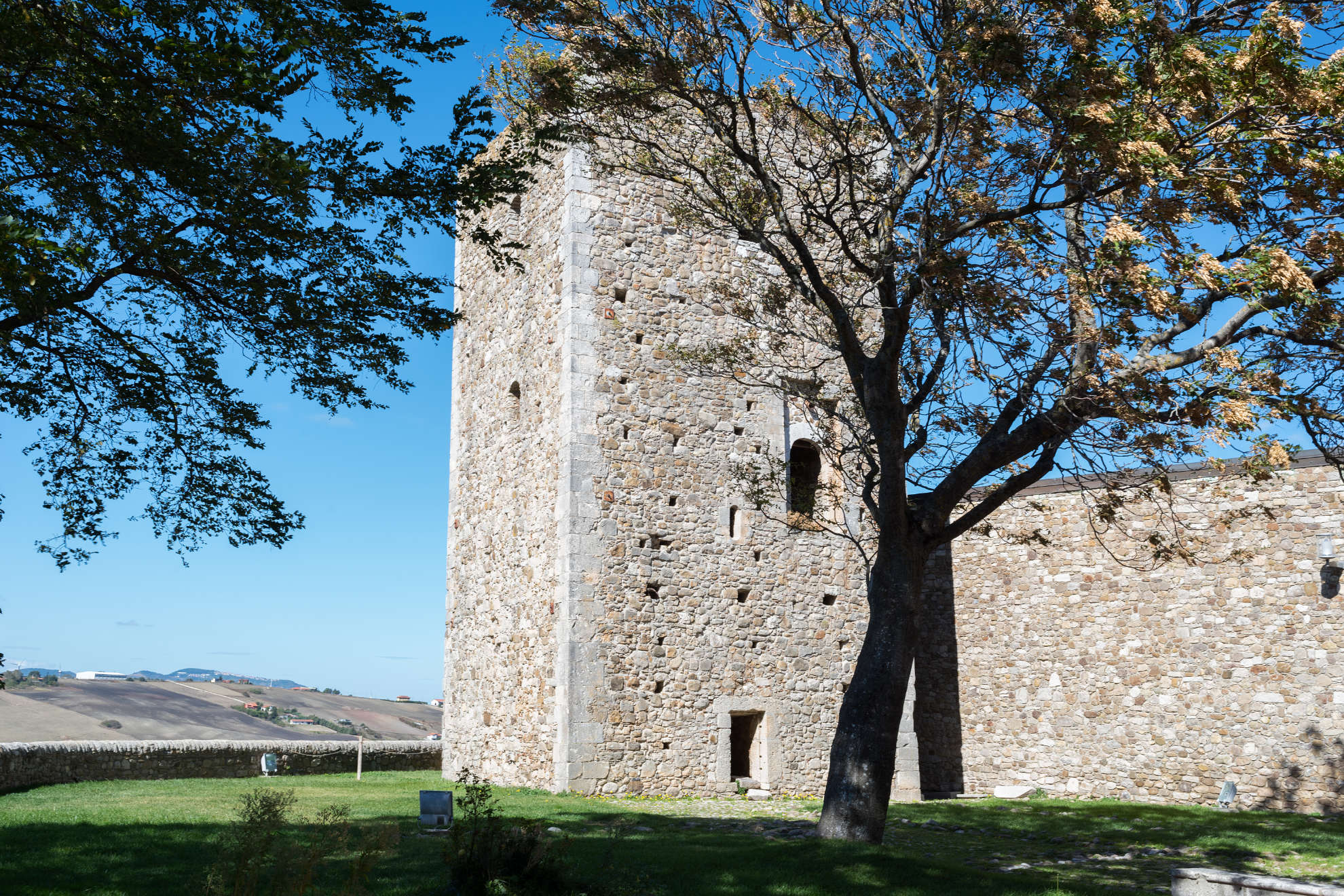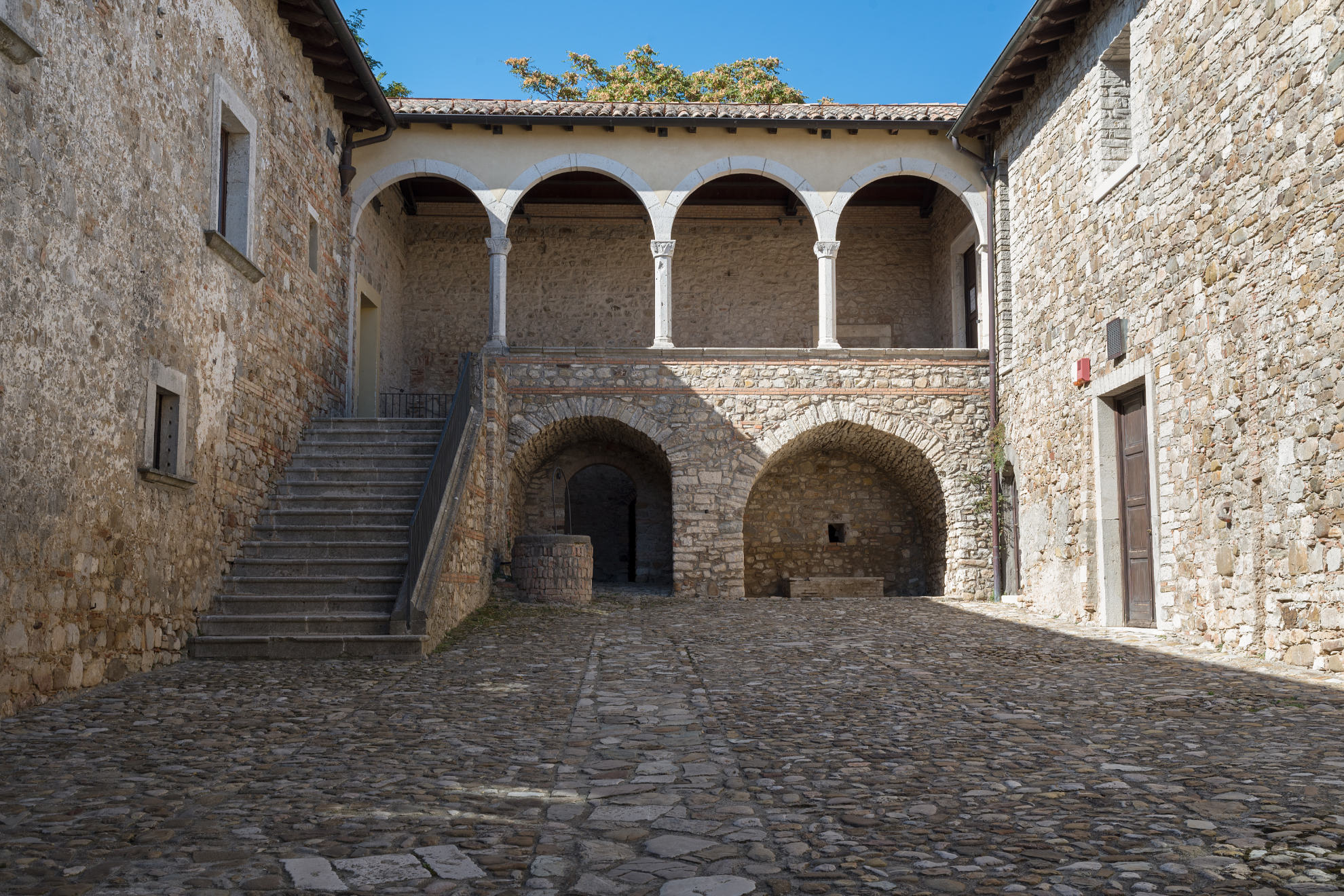Irpinia is a green land, made up of wild landscapes, vineyards and pastures. And castles, scattered among the towns of Avellino province, with an almost surprising concentration.
At the center of Bisaccia the tower of the Ducal Castle stands out | Ph. Flaviana Frascogna - Trentaremi

In some cases they represent tenuous traces of an vague historical memory, in many others they are evidence of a past of conquests and dominations. It is so for the Ducal Castle of Bisaccia, a small Irpinia town located in a border area inhabited since prehistoric times.
The large square tower | Ph. Flaviana Frascogna - Trentaremi

Plenty of archaeological finds in this area refer to the Bronze and Iron Ages. These include the burial of a “princess”, who was discovered in 1975. A special tomb, full of vases and bronze objects, which housed the body of a young woman belonging to a prominent group of the society. Today the story of the princess is told, through the objects of her tomb, in the exhibition rooms of the Bisaccia castle, housing the Civic Archaeological Museum.
Ph. Flaviana Frascogna - Trentaremi

And who knows how many other princesses, noblewomen and ladies, roamed within the walls of the castle, since its foundation under the Lombards. The oldest nucleus in fact dates back to the eighth century, but very little remains of those times. The Swabian era, to which the large square tower belongs, is much better preserved. The Emperor Frederick II, who stayed in the castle in 1250, wanted the transformation of this place and the construction of the tower, consisting of three levels and ideally in communication with the other Federician towers of the surrounding territories.
Ph. Flaviana Frascogna - Trentaremi

After Frederick II, we have informations about this place in the Renaissance age, when the structure underwent numerous changes, that still characterize it today, starting with the portal and the courtyard with a small loggia. The large loggia on the north side, the real jewel of the castle, also dates back to the same period. Twenty-six arches open on rolling hills and on the roofs of the city, offer the eye a rhythmic landscape, with different observation points. The wind turbines in the distance, the woods, the fields and the houses, everything is harmoniously framed by the arches.
The writer Torquato Tasso, who according to tradition was a guest of the castle for a short stay, probably also set foot in this large loggia. Certainly some members of the powerful and noble Pignatelli family passed through, who bought Bisaccia and had the merit of seeing it elevated to a duchy. Later, the castle belonged to other families and experienced long periods of neglect, up to the years of the earthquakes that in the 1900s shook the peace of the people of the village and damaged the monument.
The loggia of the castle | Ph. Flaviana Frascogna - Trentaremi

Perhaps due to the consequences of the devastation, a large part of the population of Bisaccia left this corner of sky and greenery, so much so that recent local administrators have put the abandoned houses in the historic center up for sale for the symbolic amount of one euro. Fortunately, the castle walls still contain the stories of princesses, towers and poets.

